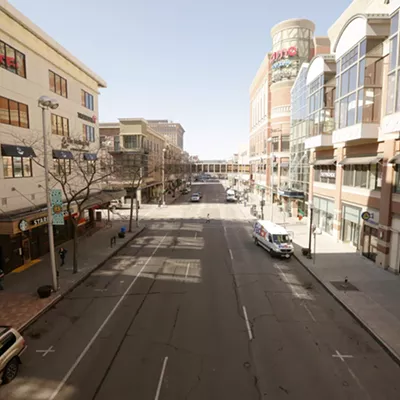Hello! ¡Hola! Salam! Ni hao! Hallo! Merhaba!
We're 18 weeks into the year and 31 dishes into the Inlander's "Around the World in 80 Plates," our quest to find 80 menu items in and around Spokane that represent 80 different places around the globe. So far, I've sampled milk cakes from north India, pupusas from El Salvador, pastries from Turkey, head cheese from Germany and sea buckthorn tea from Ukraine. Spoiler alert: Everything's been delicious — yes, even the head cheese. (Read it at Inlander.com/aroundtheworld.)
The thing is, I haven't even hit up Spokane's biggest import shops yet. I've yet to set foot in Asian World, Kiev Market or African Market and Beauty Supply. I haven't even stopped into many international restaurants. In an effort to save the easy stuff for last, I've focused my initial efforts on gas station snacks, cafes, mom-and-pop shops and back shelves. I've been able to keep this up for a third of the year, and it hasn't gotten difficult yet.
Take, for example, my trip to Main Market in downtown Spokane, a co-op dedicated mostly to local foodstuffs. In the last aisle across from the bulk foods, a famous Dutch cocoa and an ancient grain from the slopes of a Syrian volcano were wedged between local dry goods.
Or, between interviews in Spokane Valley, I stopped into a gas station and found an entire Indian mini mart, complete with imported spices and handmade sweets. Even local cafes like Ladder Coffee and Cedar Coffee have unique international drinks for those who scan the corners of the menu.
Yes, I've also explored the far-flung expertise of established chefs like Chad White at Zona Blanca and Ruins' Tony Brown and Peter Adams. But mostly, this has been an exercise in finding stories that are hiding in plain sight at our routine, everyday places. Food today is so globalized, it hasn't been very hard.
Which begs the question, should it be this easy? Not only is growing food labor and resource intensive, but shipping that food around the world leaves a massive carbon footprint. According to a 2022 study published in Nature Food, global "food miles," which consider emissions from the entire food system, might release up to 3 billion tons of carbon dioxide a year. High income nations like the U.S. represent only 12.5% of the global population but are responsible for about half of those emissions.
I love wandering through crowded aisles and finding ingredients I don't recognize. But they don't just magically appear on the shelf. Each took some amount of fertilizer and fossil fuel to get here. It might not be wrong, but it's something to think about.
Some researchers took issue with the 2022 study, as a healthy scientific community is prone to do. The lead researcher gave an interesting caveat, too — that eliminating international food distribution would reduce food mile emissions by just 9%, and that eating seasonally and limiting meat consumption were important puzzle pieces for reducing food's carbon footprint.
Eating responsibly is really hard. We don't have many systems that reward it. But the first step might be becoming more aware of what our food represents, from history and culture to resources and lobbying. There's cause for both celebration and concern. The only thing we're running out of room for is ignorance. ♦



























